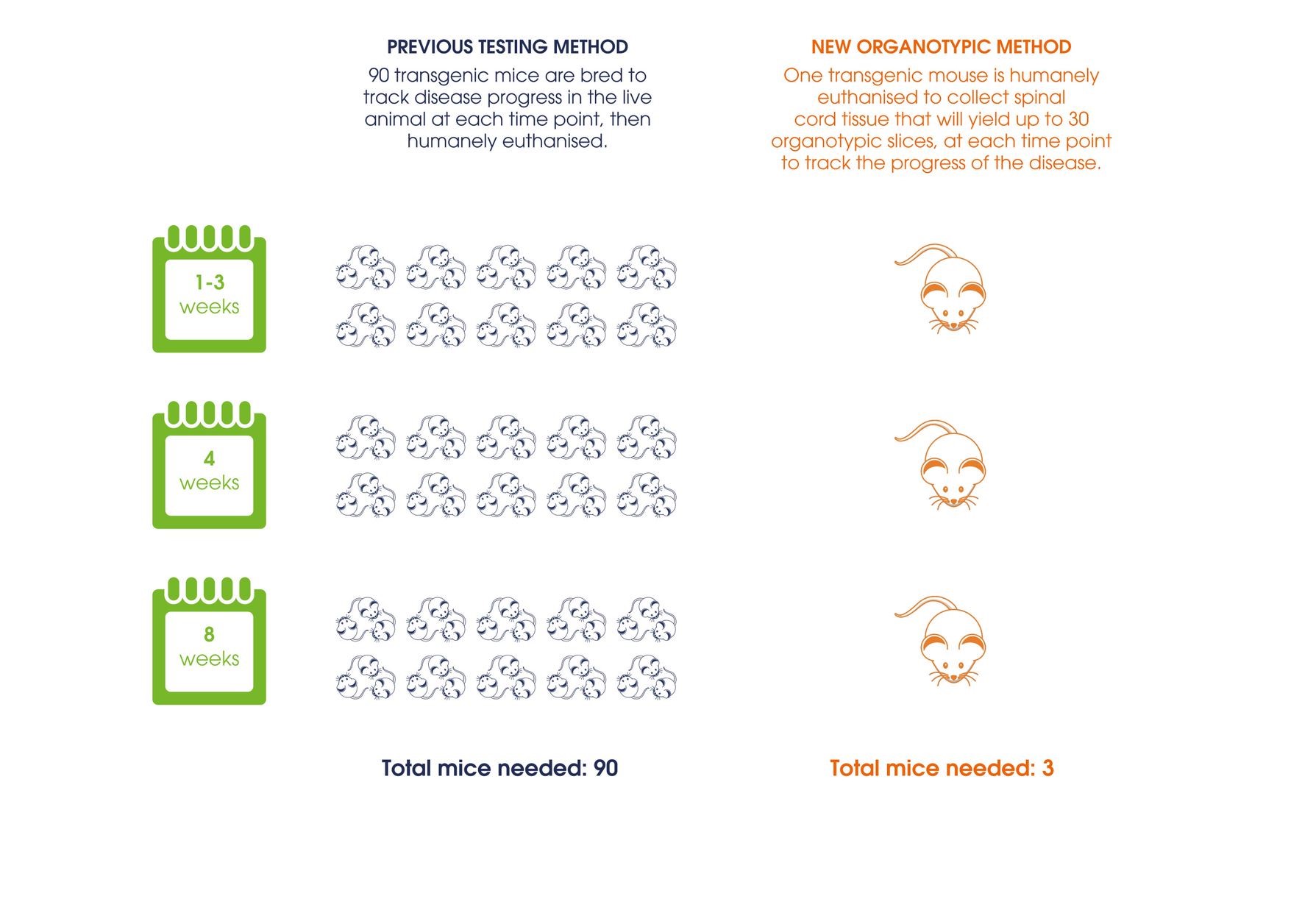The vision of the MND Association is a world free from MND. To achieve this we fund and promote research that leads to new understanding and treatments and brings us closer to a cure for MND.
The scientific community looks for ways to minimise the use of animals in research. Medical charities, along with the government and pharmaceutical companies, fund the NC3Rs (the National Centre for the Replacement, Refinement and Reduction of Animals in Research), which promotes the '3Rs' and develops ways to replace animal research and improve animal welfare. The 3Rs are:
- Replacement - using alternative techniques or avoiding the use of animals altogether.
- Refinement - designing experiments that cause the least harm to animals and maximise their welfare.
- Reduction - using as few animals as possible.
As part of the NC3Rs commitment to encourage researchers to replace, refine and reduce the number of animals used in research they have published a set of guidelines, known as the ARRIVE guidelines. These guidelines set out what should be included in reports where the research has involved animals.
Aren't many pointless, unnecessary animal experiments carried out?
Researchers must clearly demonstrate that they have considered non-animal alternatives before designing their research, and that they have only allowed for the minimum number of animals possible. Every research proposal is therefore rigorously assessed by panels of experts, and trivial, irrelevant or unnecessarily repetitive work will not receive funding.
How does MND research fit into the 3Rs?
If we include fruit flies, which do not require a UK licence, about half of the research we fund involves animals. All of our researchers have had to show how they comply with this.
Reduction and replacement
Researchers are helping to change the way animals are used in research by applying these principles to their own research. This includes using induced pluripotent stem cell (iPSC) technology, which has enabled researchers to create living human motor neurones derived from patients' cells, and study them in the lab. In many studies the use of iPSCs has replaced the use of rat or mouse motor neurones.
Refinement and reduction
Another example of how researchers comply with the 3Rs is the use of organotypic spinal cord tissue slices from TDP-43 transgenic mice. Organotypic tissue is tissue that is removed from the organ but continues to develop as it would in that organ. Using slice cultures instead of live animals, wherever possible, allows for a reduction in the total number of animals required for an experiment, as multiple slices can be obtained from an individual animal.
